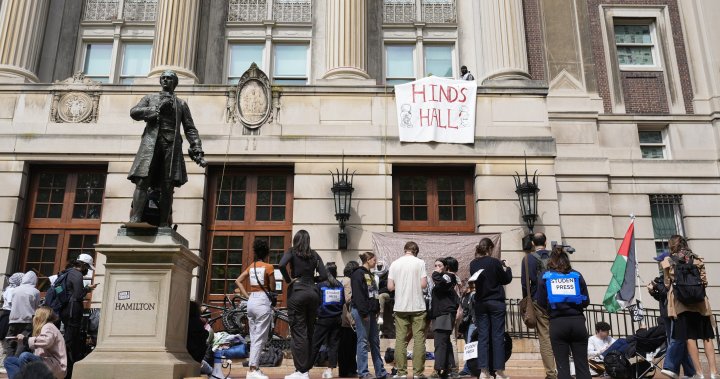When the Covid-19 pandemic began, it wasn’t hard to predict that incarcerated people would be at higher risk. Many prisons and jails are crowded, dirty places with inconsistent access to healthcare – breeding grounds for the highly infectious virus. But the job of documenting the deaths has fallen to a patchwork of research groups and reporters.
Now, a national study from one of these collaborations, between the University of California, Irvine and Brigham and Women’s Hospital, shows that at the peak of the pandemic in 2020, people inside prisons died almost three-and-a-half times more frequently than the free population.
More than 6,000 incarcerated people died in the first year of the pandemic, researchers found, using numbers they collected from state prison systems and the Federal Bureau of Prisons. A Marshall Project analysis of data the researchers released shows that the overall prison mortality rate spiked at least 50%, and potentially exceeded 75%, with roughly 50 or more people dying per 10,000 in prison in 2020.
The virus hit older generations especially hard. In the eight states that shared age data, death rates for people aged 50 and older rose far higher than for others, “reaffirming how much more vulnerable older prisoners are”, said the study’s lead author, Naomi Sugie.
At the same time, incarceration rates dropped during the first year of the pandemic, but not because an extraordinary number of people were released. Despite a range of advocates calling for releases – particularly for older adults, who have higher health risks and statistically lower chances of committing a crime – data shows that fewer people than in a typical year were let out in 2020. Instead, there was a dramatic reduction in prison admissions.
The slowdown in admissions meant that prison systems reduced the number of younger people exposed to Covid. That’s because incarcerated people are generally older than those likely to be sent to prison.
By the end of 2020, Bureau of Justice Statistics data shows, the number of people in state prisons under 55 fell by 17%, while the 55 and older population was down by 6%.
States and the federal government have legal tools to release at least some people, but rarely used them during the most urgent phase of the pandemic.
In most states, only the governor and parole board can release people from prison without a court order.
Most state constitutions allow for governors to issue a pause in a criminal sentence, known as a reprieve, as well as commutations, which let them shorten sentences and free people without post-release supervision or expectation that they return. No state governors used either power for large-scale releases during the Covid-19 emergency, and only a small number performed any at all. Rachel Barkow, a law professor at New York University, called the lack of action a “naked political calculation”, tied to concerns that even a single high-profile crime by someone who was released could turn into a media firestorm.
Most people let out from state prisons due to Covid-19 were released by parole boards. In Iowa, the parole board held more hearings and released slightly more people in 2020 than in 2019. The state’s department of corrections said that administrative changes allowed them to assess parole cases at a higher volume. Department spokesperson Zach Carlyle said that in the years that followed, the rate at which people who were released committed new crimes went down.
But Iowa was an outlier when it came to releases. Parole boards vary widely from state to state, in their composition and in how laws and political pressure play on their decisions, and most states released fewer people in 2020 than in previous years. Some officials cited the technical challenges of holding hearings during lockdowns, while others said any reduction was due to normal fluctuations in the number of people eligible for parole. In other cases, people were approved for parole, but remained incarcerated because the pandemic delayed the required re-entry courses. “Truth-in-sentencing” laws – which prevent parole boards from releasing anyone before they’ve served most or all of a minimum sentence – were another key roadblock.
In a minority of states, corrections officials have some limited authority to release prisoners – usually due to terminal illness, or total physical or cognitive disability – or to seek certain kinds of inpatient medical care, according to data collected by Families Against Mandatory Minimums, the sentencing reform advocacy group. These policies are not designed to release people based on risk of future illness, however. One exception was Minnesota, where the state granted 158 medical releases after temporarily expanding its program to those at risk for “bad outcomes” from the disease.
In addition to releases, prison systems used various mitigation efforts to slow the virus. Prison officials in Vermont, as well as prisoner advocates at the American Civil Liberties Union of Vermont, said the state took swift action with aggressive testing and by locking down their facilities. Vermont was the only state that reported zero Covid deaths in its prisons.
But the agency is still dealing with the fallout of keeping people in their cells for such long stretches, said Nick Deml, the Vermont department of corrections commissioner. “When you’re in lockdown for months on end, that has a huge physical, mental and emotional toll on human beings,” Deml said. “You’re inside for a year straight.”
after newsletter promotion
Advocates say that other states’ mitigation efforts were less aggressive. Alan Mills, executive director of Uptown People’s Law Center, an organization that supports the rights of incarcerated people in Illinois, said the state didn’t act fast enough to implement such protections. Illinois had to call in the national guard to provide basic support, like taking people’s temperatures, as deaths climbed.
The state’s medical system is still struggling, according to a recent report by an independent expert hired by the federal courts.
In 2021, Illinois passed the Joe Coleman Act, which allows the release of sick and older people. But far fewer people have been released than expected. An analysis from Injustice Watch and WBEZ found the state denied nearly two-thirds of medical-release requests from people who met the act’s medical criteria.
Naomi Puzzello, spokesperson for the Illinois department of corrections, said it’s often difficult to find nursing homes that will take older incarcerated people, so they remain in prison.
Deml said Vermont faces the same hurdle. “There are 20, maybe 30 individuals in our prison system today that, if I had a nursing facility that would accept them, I would put them in that facility,” he said.
While the data collected by the universities sheds new light on the toll of the virus, the federal government still has not publicly released official statistics. That’s because the Bureau of Justice Statistics stopped collecting data on deaths in correctional facilities in 2019, transferring the job to another branch of the Department of Justice. The agency has not announced plans on when or whether they will publish mortality data again.
“This is really both to have an accounting of what happened,” said Sugie, the study’s author, “but also, really importantly, to learn from what happened, so we don’t do this again in the future when we have another pandemic, another crisis.”
This article was published in partnership with the Marshall Project, a non-profit news organization covering the US criminal justice system. Sign up for their newsletters, and follow them on Instagram, TikTok, Reddit and Facebook.







